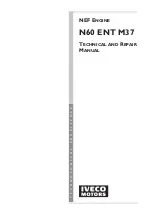
4
Safety
Gasoline and its vapors are extremely
flammable and explosive.
Fire or explosion can cause severe burns
or death.
WHEN ADDING FUEL
•
Turn engine OFF and let engine cool at least 2
minutes before removing gas cap.
•
Fill fuel tank outdoors or in well-ventilated area.
•
Do not overfill fuel tank.
•
Keep gasoline away from sparks, open flames,
pilot lights, heat, and other ignition sources.
•
Check fuel lines, tank, cap, and fittings
frequently for cracks or leaks. Replace if
necessary.
WHEN STARTING ENGINE
•
Make sure spark plug, muffler, fuel cap and air
cleaner are in place.
•
Do not crank engine with spark plug removed.
•
If fuel spills, wait until it evaporates before
starting engine.
•
If engine floods, set choke to OPEN/RUN
position, place throttle in FAST and crank until
engine starts.
WHEN OPERATING EQUIPMENT
•
Do not choke carburetor to stop engine.
WHEN TRANSPORTING EQUIPMENT
•
Transport with fuel tank EMPTY.
WHEN STORING GASOLINE OR EQUIP-
MENT WITH FUEL IN TANK
•
Store away from furnaces, stoves, water
heaters or other appliances that have pilot light
or other ignition source because they can ignite
gasoline vapors.
WARNING
This engine is shipped from Briggs & Stratton
without oil. If you start the engine without oil,
the engine will be damaged beyond repair and
will not be covered under warranty.
CAUTION
Starting engine creates sparking.
Sparking can ignite nearby flammable
gases.
Explosion and fire could result.
•
If there is natural or LP gas leakage in area, do
not start engine.
•
Do not use pressurized starting fluids because
vapors are flammable.
WARNING
Rapid retraction of starter cord (kickback)
will pull hand and arm toward engine
faster than you can let go.
Broken bones, fractures, bruises or
sprains could result.
•
When starting engine, pull cord slowly until
resistance is felt, then pull rapidly.
•
Direct coupled equipment components such as,
but not limited to, blades, impellers, pulleys,
sprockets, etc., must be securely attached.
WARNING
WARNING
Rotating parts can contact or entangle
hands, feet, hair, clothing, or accessories.
Traumatic amputation or severe lacera-
tion can result.
•
Operate equipment with guards in place.
•
Keep hands and feet away from rotating parts.
•
Tie up long hair and remove jewelry.
•
Do not wear loose-fitting clothing, dangling
drawstrings or items that could become caught.
WARNING
Engines give off carbon monoxide, an
odorless, colorless, poison gas.
Breathing carbon monoxide can cause
nausea, fainting or death.
•
Start and run engine outdoors.
•
Do not start or run engine in enclosed area,
even if doors or windows are open.
WARNING
•
Allow muffler, engine cylinder and fins to cool
before touching.
•
Remove accumulated debris from muffler area
and cylinder area.
•
Install and maintain in working order a spark
arrester before using equipment on
forest-covered, grass-covered, brush-covered
unimproved land. The state of California
requires this (Section 4442 of the California
Public Resources Code). Other states may
have similar laws. Federal laws apply on federal
land.
Running engines produce heat. Engine
parts, especially muffler, become
extremely hot.
Severe thermal burns can occur on
contact.
Combustible debris, such as leaves,
grass, brush, etc. can catch fire.
Содержание 21000 Series
Страница 20: ......





































